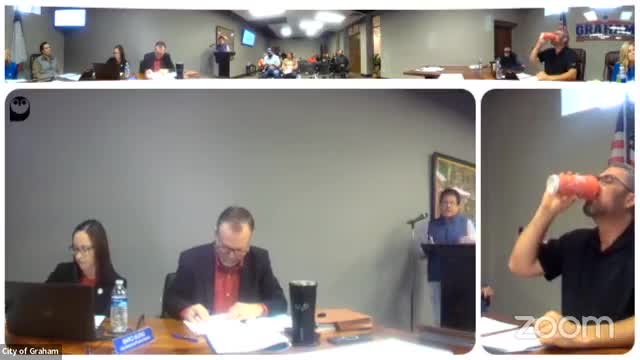Local Resident Raises Concerns Over Proposed Housing Development Near Standpipe
December 04, 2024 | Graham, Young County, Texas
This article was created by AI summarizing key points discussed. AI makes mistakes, so for full details and context, please refer to the video of the full meeting. Please report any errors so we can fix them. Report an error »

In the heart of Graham, Texas, a recent city council meeting brought to light the complexities of potential residential development in a wooded area near Standpipe. As council members gathered, the atmosphere was charged with a mix of anticipation and concern, particularly regarding the terrain's suitability for housing.
One resident, who lives adjacent to the proposed site, voiced his apprehensions about the development. He described the land as hilly and heavily wooded, suggesting that it does not lend itself easily to residential construction. “It’s not an area that just screams out, man, that’s right for residential development,” he remarked, emphasizing the natural beauty of the landscape that he values. His perspective was clear: he prefers the tranquility of trees over the prospect of new homes looming over his property.
Acknowledging his bias as a nearby homeowner, he candidly shared his feelings about the potential changes to his environment. “I like looking at trees at the back of my house as opposed to the second story of the repose,” he stated, highlighting the personal stakes involved in the council's decision-making process.
While the council's agenda did not focus on the housing environment itself, the resident's comments underscored a broader concern among community members about preserving the natural landscape amidst urban development. As discussions continue, the city faces the challenge of balancing growth with the preservation of its unique terrain, a task that will require careful consideration of both community needs and environmental impact.
As the meeting concluded, it was clear that the future of this wooded area remains uncertain, with residents keenly watching how their city leaders will navigate these pivotal decisions.
One resident, who lives adjacent to the proposed site, voiced his apprehensions about the development. He described the land as hilly and heavily wooded, suggesting that it does not lend itself easily to residential construction. “It’s not an area that just screams out, man, that’s right for residential development,” he remarked, emphasizing the natural beauty of the landscape that he values. His perspective was clear: he prefers the tranquility of trees over the prospect of new homes looming over his property.
Acknowledging his bias as a nearby homeowner, he candidly shared his feelings about the potential changes to his environment. “I like looking at trees at the back of my house as opposed to the second story of the repose,” he stated, highlighting the personal stakes involved in the council's decision-making process.
While the council's agenda did not focus on the housing environment itself, the resident's comments underscored a broader concern among community members about preserving the natural landscape amidst urban development. As discussions continue, the city faces the challenge of balancing growth with the preservation of its unique terrain, a task that will require careful consideration of both community needs and environmental impact.
As the meeting concluded, it was clear that the future of this wooded area remains uncertain, with residents keenly watching how their city leaders will navigate these pivotal decisions.
View full meeting
This article is based on a recent meeting—watch the full video and explore the complete transcript for deeper insights into the discussion.
View full meeting
